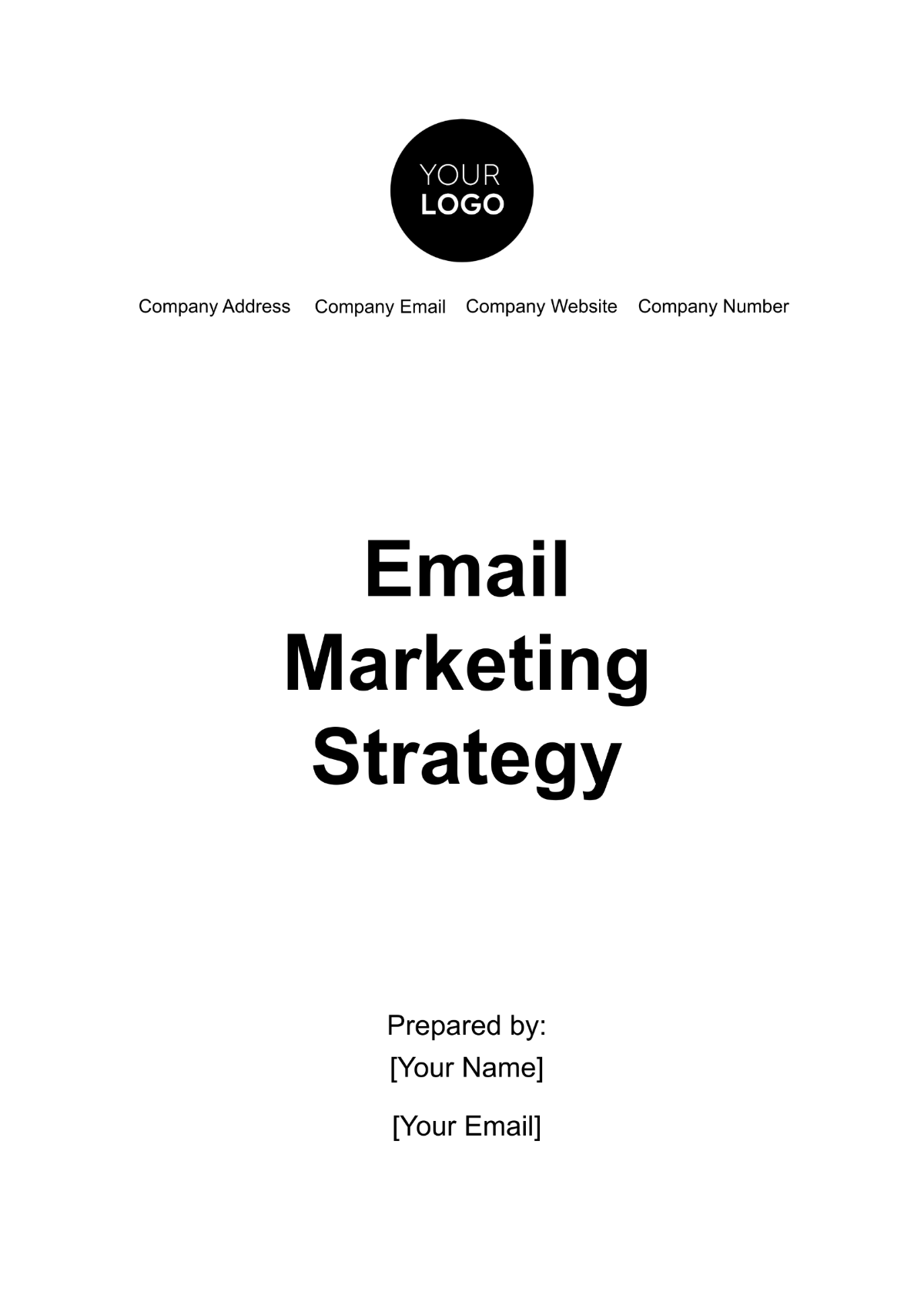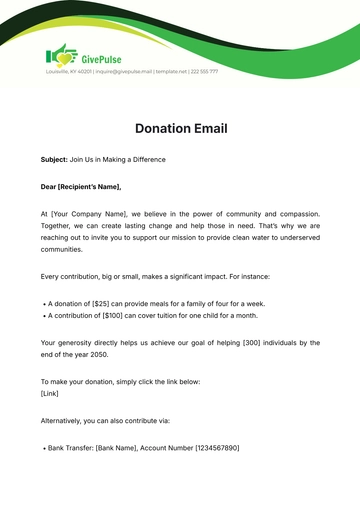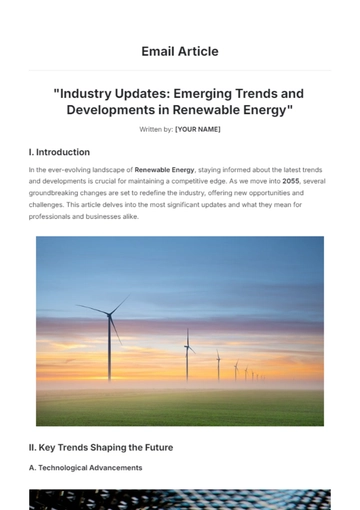Free Email Marketing Strategy

I. Target Audience Definition
At [Your Company Name], accurately defining our target audience is fundamental to our email marketing success. We start by segmenting our audience using detailed criteria such as demographics, including age, gender, and income levels, as well as geographic location and behavioral factors like past purchasing behavior and engagement with our website. By leveraging data from customer surveys, social media analytics, and CRM systems, we develop comprehensive buyer personas that illuminate the specific needs, preferences, and challenges of each segment. This enables us to create highly relevant and engaging email content tailored to resonate with each distinct audience group.
In addition, adherence to US regulations such as the CAN-SPAM Act and GDPR is integral to our strategy. We ensure that every email recipient has provided explicit consent and that they have easy access to opt-out options. Maintaining a clean and accurate email list is a priority, achieved through regular updates and the removal of inactive subscribers. By focusing on precise audience segmentation and compliance with legal standards, [Your Company Name] is dedicated to delivering personalized and impactful email campaigns that drive engagement, foster customer loyalty, and contribute to our overall marketing objectives.
II. Content Creation
Effective content creation is at the heart of any successful email marketing campaign at [Your Company Name]. To ensure our content resonates with our audience and achieves our marketing goals, we follow a structured approach that includes the following key sub-sections:
1. Understanding Audience Needs
Our first step in content creation is to thoroughly understand the needs and preferences of our target audience. By analyzing data from previous email campaigns, customer feedback, and market research, we identify the types of content that resonate most with our subscribers. This includes determining the topics of interest, the preferred tone and style, and the types of offers or information our audience finds most valuable. By tailoring our content to meet these specific needs, we can enhance engagement and drive higher response rates.
2. Crafting Compelling Messages
With insights into our audience's preferences, we proceed to craft compelling email messages. Each email is designed with a clear and focused objective, whether it's to inform, entertain, or persuade. Our content includes well-written subject lines that capture attention and encourage opens, engaging body text that delivers value, and strong calls-to-action (CTAs) that drive recipients towards desired actions. We also incorporate personalized elements, such as using the recipient's name and referencing past interactions, to create a more personalized and relevant experience.
3. Incorporating Visual Elements
Visual elements play a crucial role in capturing attention and enhancing the overall appeal of our emails. We use high-quality images, graphics, and videos that complement the message and reinforce our brand identity. Our email designs are responsive, ensuring they look great on both desktop and mobile devices. We also utilize clear and visually appealing layouts that make the content easy to read and navigate, helping to boost engagement and minimize bounce rates.
4. Ensuring Compliance and Accessibility
Lastly, all content created at [Your Company Name] adheres to legal requirements and accessibility standards. We ensure compliance with the CAN-SPAM Act by including necessary disclaimers and opt-out options in every email. Additionally, we follow best practices for email accessibility, such as using alt text for images and ensuring proper contrast ratios, to make our emails accessible to all recipients, including those with disabilities.
By focusing on these areas, [Your Company Name] ensures that our email content is not only engaging and effective but also compliant with legal standards and accessible to a diverse audience.
III. Design and Layout
At [Your Company Name], the design and layout of our email campaigns are crafted to enhance readability, engagement, and overall user experience. Our approach encompasses several critical aspects to ensure that every email not only looks professional but also performs effectively.
1. Visual Appeal and Branding
We prioritize a visually appealing design that aligns with our brand identity. Each email features a consistent color scheme, typography, and logo placement that reinforces our brand's image and helps recipients instantly recognize our communications. High-quality images and graphics are carefully selected to complement the message and capture attention without overwhelming the content. By maintaining a cohesive visual style, we create a strong brand presence that supports recognition and trust.
2. Responsive Design
Given the increasing use of mobile devices to access emails, responsive design is a key component of our strategy. Our email templates are optimized for various screen sizes, ensuring that they display correctly and remain user-friendly on both desktops and smartphones. We use flexible layouts and scalable images to provide a seamless experience, regardless of the device used. This responsiveness helps to increase engagement and reduce the likelihood of recipients deleting or ignoring our emails due to poor formatting.
3. Clear and Logical Layout
The layout of our emails is structured to facilitate easy navigation and readability. We employ a clear hierarchy, with prominent headings and subheadings that guide readers through the content. Important information is highlighted, and calls-to-action (CTAs) are strategically placed to draw attention and encourage clicks. The use of bullet points, short paragraphs, and whitespace helps to break up the text and makes the email more digestible. This thoughtful layout ensures that recipients can quickly scan the email and find the information they need.
4. Accessibility Considerations
We are committed to making our emails accessible to all recipients, including those with disabilities. Our design practices include using alt text for images, ensuring sufficient contrast between text and background colors, and structuring the email content with proper HTML formatting. These measures help to ensure that our emails are readable by screen readers and provide a positive experience for all users.
By focusing on these design and layout principles, [Your Company Name] delivers emails that are not only visually appealing but also functional and accessible, enhancing engagement and driving better results from our email marketing efforts.
IV. Scheduling and Frequency
Finding the right balance in scheduling and frequency is essential for maximizing the impact of our email campaigns at [Your Company Name]. Timing and regularity play a significant role in maintaining engagement without overwhelming recipients. An effective strategy involves determining the optimal times and frequencies for sending emails, based on audience behavior and campaign objectives.
To guide our approach, the following table outlines key scheduling considerations and best practices. It provides insights into different types of email campaigns, recommended sending frequencies, and ideal times to ensure that our messages are delivered at the most effective moments. This structured approach helps us fine-tune our email marketing efforts for optimal results.
Email Type | Recommended Frequency | Optimal Sending Time | Best Practices |
|---|---|---|---|
Promotional Emails | Weekly or Bi-weekly | Mid-Morning (10 AM - 12 PM) | Include clear CTAs and relevant offers; avoid overloading. |
Newsletters | Monthly or Bi-monthly | Early Afternoon (1 PM - 3 PM) | Provide valuable content and updates; ensure consistency. |
Transactional Emails | As Needed | Immediate upon trigger event | Ensure timely delivery and include clear instructions or confirmations. |
Event Invitations | 2-4 Weeks Before Event | Mid-Morning (10 AM - 12 PM) | Include all event details and a clear RSVP process. |
Re-engagement Emails | Quarterly | Late Afternoon (4 PM - 6 PM) | Use compelling subject lines and offers to re-capture attention. |
V. Analytics and Optimization
At [Your Company Name], analyzing and optimizing email campaign performance is crucial for continuous improvement and achieving marketing goals. We leverage various metrics to gauge the effectiveness of our emails and identify areas for enhancement.
Key Metrics and Analysis
Open Rate: Measures the percentage of recipients who open our emails. A low open rate may indicate issues with subject lines or timing. We test different subject lines and sending times to find the most effective combinations.
Click-Through Rate (CTR): Indicates how many recipients click on links within the email. A low CTR suggests that our content or CTAs may not be compelling enough. We analyze which links or offers generate the most clicks and adjust content accordingly.
Conversion Rate: Tracks the percentage of recipients who complete a desired action, such as making a purchase or signing up for a webinar. This metric helps us assess the effectiveness of our CTAs and overall email content in driving actions.
Unsubscribe Rate: Measures the percentage of recipients who opt out of our mailing list. A high unsubscribe rate may signal that our content is not meeting expectations or that we are sending emails too frequently.
Optimization Strategies
A/B Testing: We conduct A/B tests on various elements of our emails, such as subject lines, content, and CTAs, to determine what performs best and apply these insights to future campaigns.
Segmentation: By analyzing performance data, we refine our audience segments to ensure that our emails are highly targeted and relevant.
Feedback and Iteration: We regularly gather feedback from recipients and use this information to make data-driven improvements, ensuring that our email marketing efforts continually evolve to meet audience needs and preferences.
Through rigorous analysis and continuous optimization, [Your Company Name] aims to enhance the effectiveness of our email marketing strategy, driving better engagement and achieving our business objectives.
A well-executed email marketing strategy at [Your Company Name] hinges on a thorough understanding of our audience, compelling content creation, effective design and layout, strategic scheduling, and ongoing optimization. By adhering to these principles and continuously refining our approach based on data and feedback, we are committed to delivering impactful and engaging email campaigns. Our goal is to foster strong connections with our audience, drive meaningful interactions, and achieve our marketing objectives, ultimately contributing to the growth and success of [Your Company Name].
- 100% Customizable, free editor
- Access 1 Million+ Templates, photo’s & graphics
- Download or share as a template
- Click and replace photos, graphics, text, backgrounds
- Resize, crop, AI write & more
- Access advanced editor
Boost your email campaigns with the Email Marketing Strategy Template from Template.net. This editable and customizable template helps you design and implement effective email strategies. Fully editable in our Ai Editor Tool, it provides a professional and structured format to optimize your email marketing efforts, ensuring higher engagement and conversions.





























